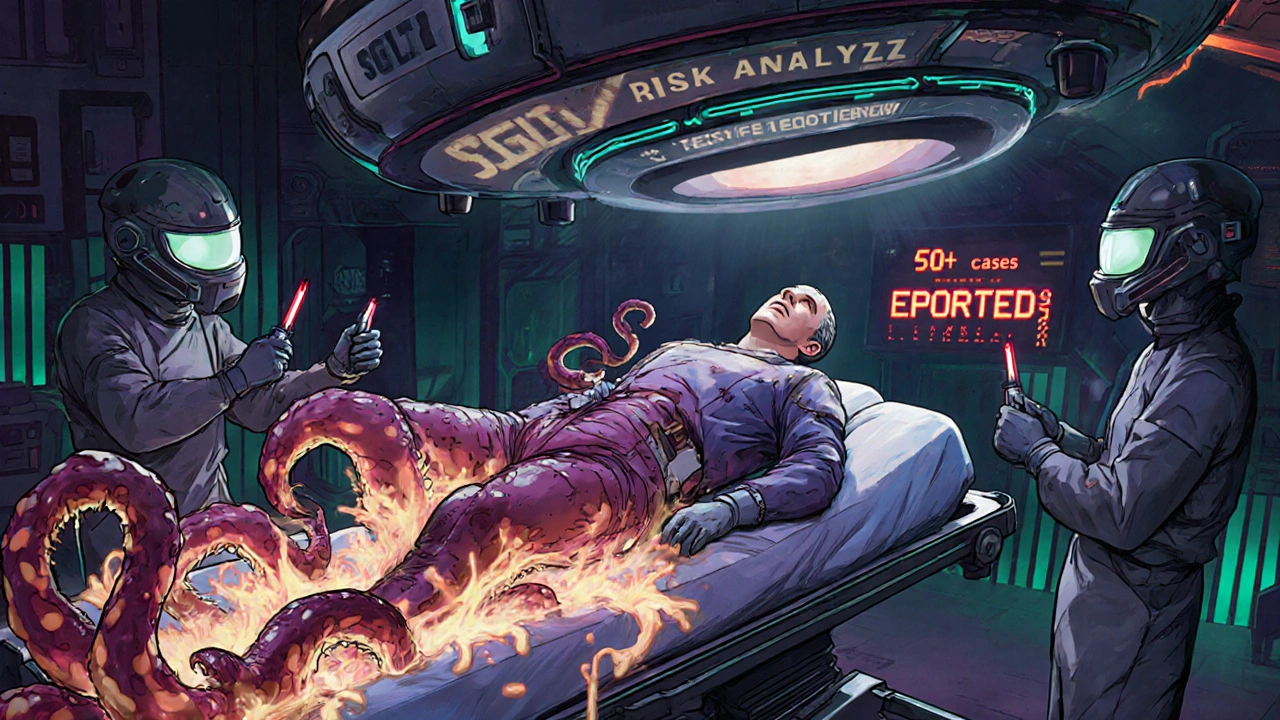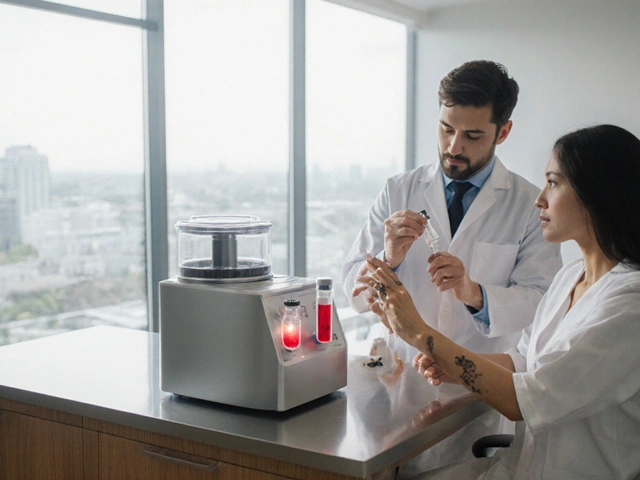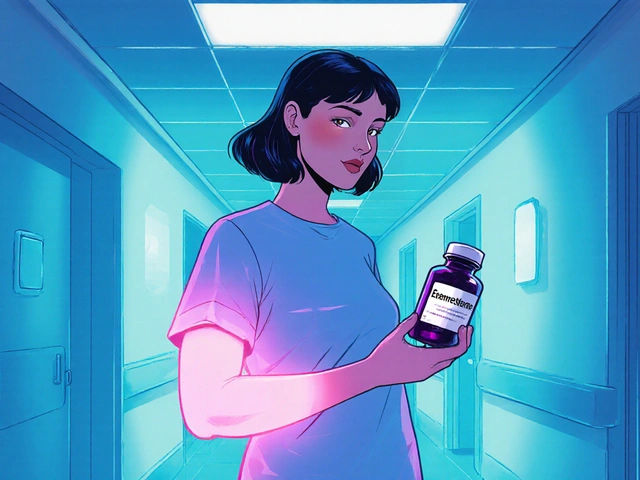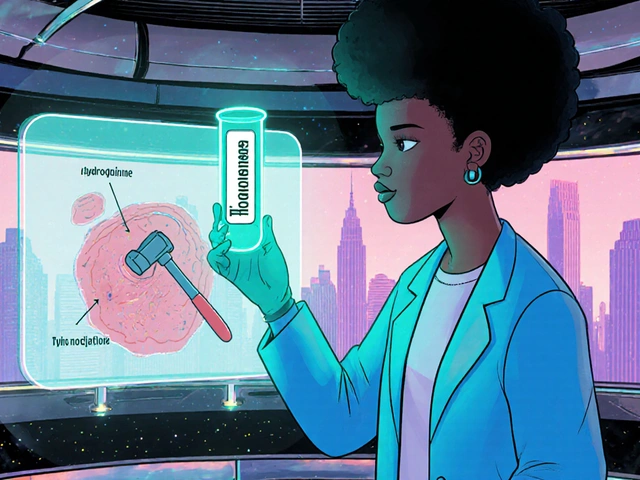
SGLT2 Inhibitor Risk Assessment Tool
Your Risk Level
0
Recommendations:
When you're managing type 2 diabetes, finding a medication that lowers blood sugar without causing dangerous lows or weight gain feels like a win. That’s why SGLT2 inhibitors became so popular. But for many people, the side effects came out of nowhere - itching, burning, frequent urination, and sometimes something far worse. If you’re on one of these drugs and you’ve noticed unusual symptoms down there, you’re not alone. And you’re not overreacting.
How SGLT2 Inhibitors Work - and Why They Cause Infections
SGLT2 inhibitors like dapagliflozin (Farxiga), empagliflozin (Jardiance), and canagliflozin (Invokana) don’t work like most diabetes pills. Instead of telling your body to make more insulin or making cells more sensitive to it, they tell your kidneys to dump sugar into your urine. Every day, you might pee out 40 to 110 grams of glucose - that’s about 10 to 25 teaspoons of sugar. Sounds crazy, right? But it works. Blood sugar drops. Weight often goes down. And for people with heart disease or kidney problems, these drugs actually cut the risk of death and hospitalization. Here’s the catch: sugar in your urine is food for yeast and bacteria. Your genital area, especially in women, is already a warm, moist environment. Add sugar to that mix, and you’ve created the perfect breeding ground for Candida - the fungus that causes yeast infections. Men aren’t immune either. Balanitis, or inflammation of the head of the penis, is common in men taking these drugs.The Numbers Don’t Lie
Studies show that 3% to 5% of people taking SGLT2 inhibitors get a genital yeast infection within the first few months. That’s three to five times higher than people on other diabetes meds like metformin or DPP-4 inhibitors. In women, it’s mostly vulvovaginal candidiasis - think thick white discharge, intense itching, redness. In men, it’s often redness, swelling, or pain when urinating or having sex. But it doesn’t stop there. These drugs also raise your risk of urinary tract infections (UTIs) by about 78% compared to other diabetes treatments. Most of these are mild - burning when you pee, needing to go often. But some turn serious. Between 2013 and 2014, the FDA recorded 19 cases of urosepsis - a life-threatening blood infection that started in the urinary tract - linked to SGLT2 inhibitors. Four of those patients ended up in intensive care. Two needed dialysis because their kidneys failed.When It Gets Dangerous: Complicated Infections
Most yeast infections are annoying, not deadly. But SGLT2 inhibitors can trigger infections that spread beyond the bladder. One case from the NIH involved a 64-year-old woman who developed emphysematous pyelonephritis - a rare, gas-forming kidney infection that can destroy tissue. She had no history of UTIs before starting dapagliflozin. After treatment, she felt fine. So her doctor restarted the drug. Eleven months later, she got another kidney infection - this time with a perinephric abscess. She needed surgery. Then there’s Fournier’s gangrene. It’s rare - less than 1 in 1,000 users - but it’s terrifying. This is a fast-spreading, necrotizing infection of the genitals and perineum. It kills tissue. It can spread to the abdomen. It requires emergency surgery, weeks of IV antibiotics, and sometimes multiple skin grafts. The European Medicines Agency added a warning for this in 2016. The FDA has since documented at least 50 cases in the U.S. since 2013. These aren’t theoretical risks. Real people are getting hospitalized. One patient told her doctor: “I never had urinary problems before this medication. Now I’ve had two life-threatening infections.”
Who’s at Highest Risk?
Not everyone on SGLT2 inhibitors gets infected. But some people are far more vulnerable:- Women - due to shorter urethras and natural anatomy
- People with a history of recurrent UTIs or yeast infections
- Those with poor genital hygiene
- People with uncontrolled blood sugar (HbA1c above 8.5%)
- Individuals over 65
- Those with kidney disease (eGFR below 60)
- People with weakened immune systems - from diabetes itself, steroids, or other conditions
What Should You Do If You’re on One of These Drugs?
If you’re already taking an SGLT2 inhibitor, here’s what you need to know:- Watch for symptoms: Itching, burning, redness, swelling in the genitals. Pain when urinating. Fever above 100.4°F. Feeling generally unwell. These aren’t normal.
- Don’t wait: If you notice any of these, call your doctor immediately. Don’t try to treat it with over-the-counter yeast cream unless your doctor says it’s safe. What looks like a simple yeast infection could be spreading.
- Hydrate: Drink plenty of water. Diluting sugar in your urine helps flush it out faster.
- Hygiene matters: Wash daily with mild soap. Dry thoroughly. Avoid tight underwear. Change out of wet clothes quickly.
- Consider cranberry: A 2023 FDA safety update noted that cranberry products may reduce UTI risk by nearly 30% in people on SGLT2 inhibitors. It’s not a cure, but it’s a low-risk supportive step.

Are There Better Alternatives?
Yes - and it depends on your health goals. If your main concern is heart disease or kidney protection, SGLT2 inhibitors are still among the best options. For someone with heart failure, the benefit of reducing hospitalization and death outweighs the infection risk - especially if you’re monitored closely. But if you’ve had repeated yeast infections or UTIs, or if you’re a woman with no heart or kidney issues, other drugs might be safer:- Metformin: First-line, low infection risk, helps with weight, cheap.
- GLP-1 agonists (like semaglutide): Lower blood sugar, promote weight loss, protect the heart, and don’t cause yeast infections.
- DPP-4 inhibitors (like sitagliptin): Low risk of infection, no weight gain, no hypoglycemia.
What If You’ve Already Had an Infection?
If you’ve had a serious UTI or genital infection while on an SGLT2 inhibitor, your doctor should reconsider whether to restart it. Some patients who resumed the drug after an infection ended up with a second, even worse infection. One study found that nearly 24% of people stopped SGLT2 inhibitors within two years because of side effects - more than double the rate of those on DPP-4 inhibitors. There’s no rule that says you have to stay on it forever. If the infection risk is too high, switching isn’t failure - it’s smart management.Bottom Line: Benefits vs. Risks
SGLT2 inhibitors are powerful tools. They’ve changed the game for people with heart failure, chronic kidney disease, and obesity-related diabetes. But they’re not magic. They come with real, documented risks - especially for your urinary and genital health. The key is knowing your own risk profile. If you’re a healthy 55-year-old with no prior infections, the odds are in your favor. But if you’re a 70-year-old woman with a history of UTIs and HbA1c above 9%, the risks may outweigh the benefits. Talk to your doctor. Don’t ignore symptoms. And don’t assume all diabetes drugs are the same. Your body’s response to sugar in your urine is personal. Pay attention to it.Can SGLT2 inhibitors cause yeast infections in men?
Yes. While yeast infections are more common in women, men taking SGLT2 inhibitors can develop balanitis - inflammation of the head of the penis. Symptoms include redness, swelling, itching, and pain during urination or sex. The cause is the same: sugar in the urine creates a breeding ground for Candida. Good hygiene and prompt treatment are essential.
Is it safe to take cranberry supplements with SGLT2 inhibitors?
Yes, and it may help. A 2023 FDA safety update cited evidence that cranberry products can reduce urinary tract infection risk by about 29% in people taking SGLT2 inhibitors. While not a substitute for medical care, cranberry supplements are low-risk and may be worth trying if you’re prone to UTIs. Choose unsweetened forms to avoid added sugar.
How long after starting an SGLT2 inhibitor do infections usually appear?
Most genital yeast infections occur within the first 3 months of starting the drug. UTIs can appear anytime, but the highest risk is during the first 6 months. Serious infections like urosepsis or Fournier’s gangrene typically develop between 2 and 6 months after starting treatment, though cases have been reported as late as 9 months in. Early symptoms should never be ignored.
Can I stop taking my SGLT2 inhibitor if I get a yeast infection?
Don’t stop on your own. If you get a mild yeast infection, your doctor may treat it with antifungal medication and keep you on the drug. But if you have a severe or recurrent infection - especially one that spreads to the kidneys or causes fever - your doctor may recommend switching to a different diabetes medication. Stopping without a plan can cause your blood sugar to spike dangerously.
Do SGLT2 inhibitors cause kidney damage?
No - the opposite is usually true. SGLT2 inhibitors are known to protect the kidneys in people with diabetes and chronic kidney disease. However, serious urinary infections - like pyelonephritis or urosepsis - can temporarily damage kidney function. In rare cases, these infections lead to acute kidney injury requiring dialysis. The drug itself doesn’t harm the kidneys; untreated infections do.
If you’re on an SGLT2 inhibitor and you’ve noticed changes in your urinary or genital health, don’t brush it off. These aren’t minor inconveniences - they’re warning signs. Talk to your doctor. Get tested. And know that there are other effective options if the risks are too high for you.




